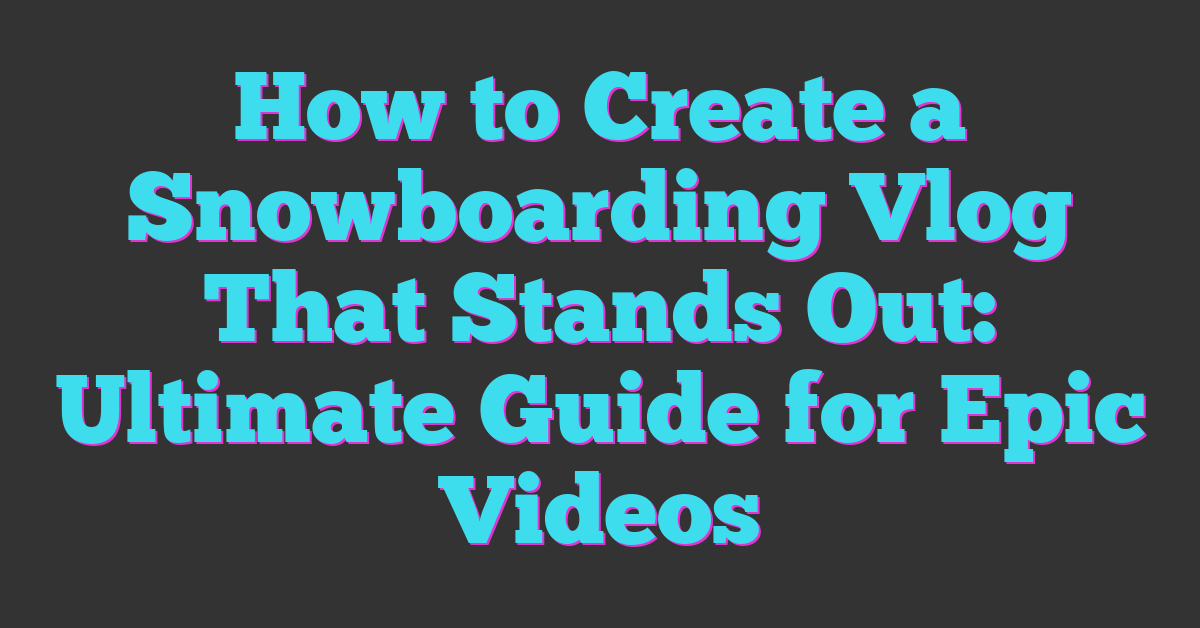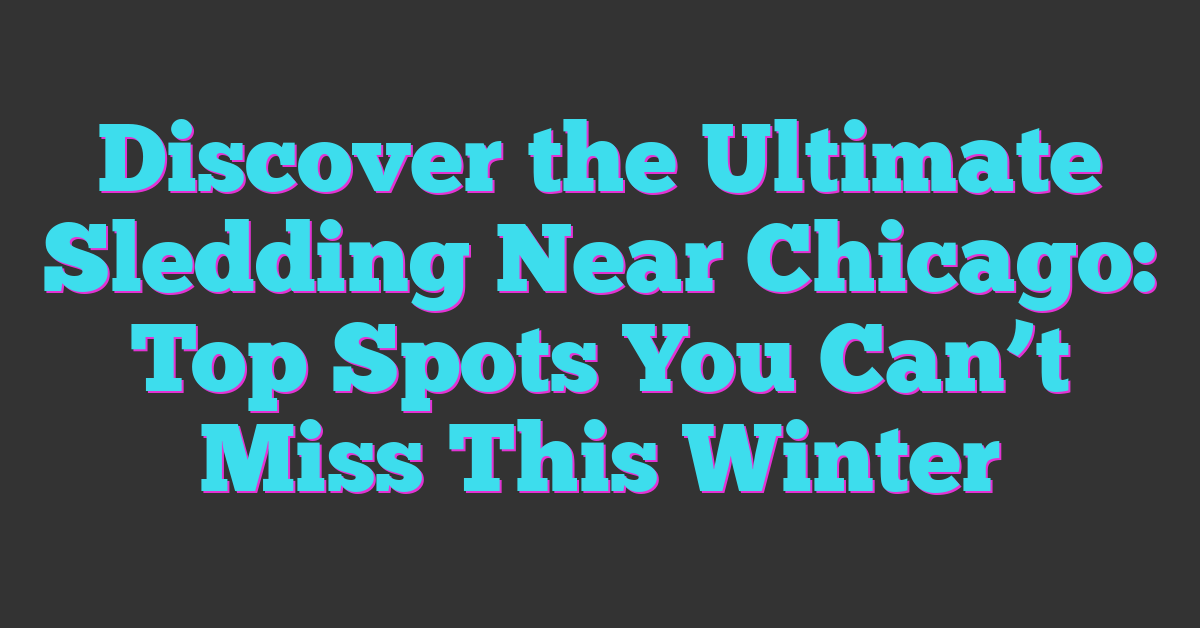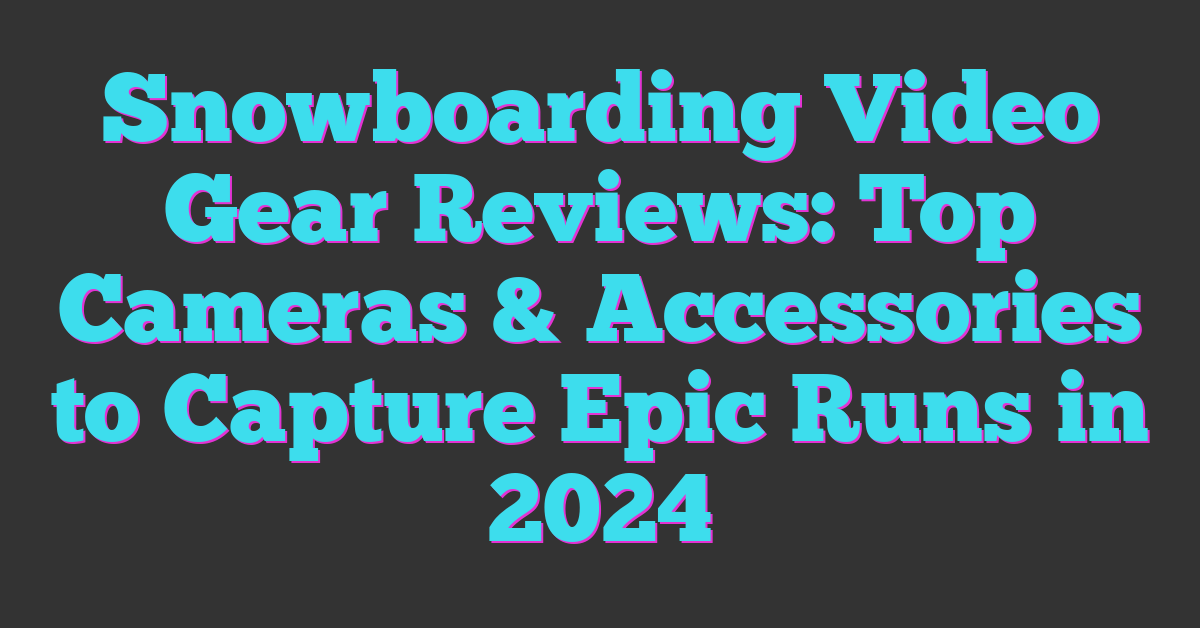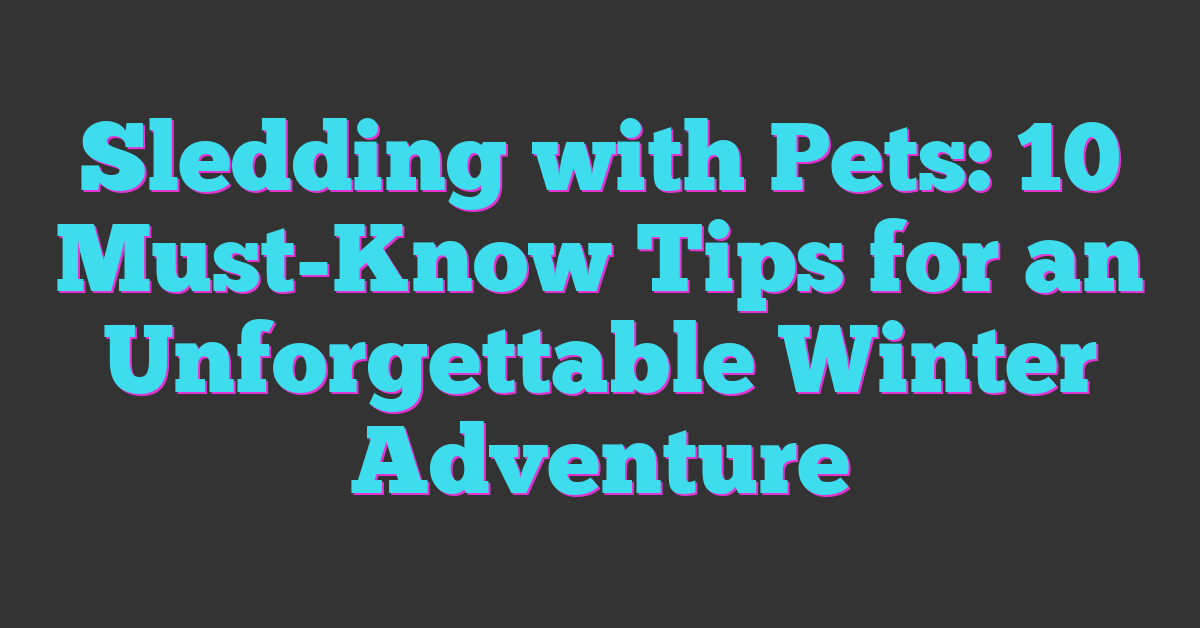Snowboarding is an adrenaline-pumping adventure that’s perfect for sharing with others. If you’ve ever thought about capturing your runs and the stunning mountain views, starting a snowboarding vlog might be just the way to do it. It’s a fun way to document your progress and connect with fellow snowboarders around the world.

Creating a vlog doesn’t have to be complicated or expensive. With a little planning and the right gear, you can turn your snowy escapades into engaging videos that showcase your style and personality. Whether you’re a beginner or a seasoned rider, your unique perspective can inspire others and make your snowboarding experiences even more memorable.
Choosing the Right Equipment for Your Snowboarding Vlog
Selecting the right gear shapes the quality of your snowboarding vlog. Your gear needs to handle cold temperatures, fast motion, and snowy conditions without slowing you down.
Cameras and Accessories
Pick a durable action camera like the GoPro HERO11 or DJI Osmo Action that shoots in 4K at 60fps or higher. These models capture sharp, smooth footage, even on fast runs. Use extra batteries and high-capacity microSD cards so you never miss a moment. Waterproof cases are essential to protect your camera from snow and moisture. Carry a compact tripod or selfie stick to vary your angles between mountain shots and face-to-camera moments.
Audio Gear for Clear Sound
Clear audio elevates your vlog and keeps your audience engaged. Lightweight lavalier microphones like the Rode Lavalier GO connect to your smartphone or camera for crisp speech. Wind noise can easily drown out your voice, so a deadcat windscreen is a must-have for outdoor recordings. If you talk while snowboarding, consider a helmet-mounted microphone to capture sound closer to your mouth while reducing environmental noise.
Mounts and Stabilizers
Secure mounts keep your footage steady and your camera safe during aggressive runs. Helmet mounts provide a first-person view of your ride. Chest mounts offer a balanced, immersive perspective without shaky hands. If you film handheld, use a gimbal stabilizer like the DJI Osmo Mobile to smooth out your shots and add cinematic flair. For static shots on the mountain, a foldable tripod stabilizes your camera on uneven snow surfaces.
Planning Your Snowboarding Vlog Content
Planning your vlog content ensures your videos stay engaging and reflect your passion for snowboarding. Focus on key elements like locations, storytelling, and weather to capture the best moments on the mountain.
Selecting Locations and Runs
Choose diverse locations showcasing a range of terrain types, like groomed trails, powder fields, and terrain parks. Prioritize runs matching your skill level and style, such as steep descents for adrenaline seekers or flowy trails for smooth carving. Highlight popular resorts like Whistler Blackcomb or small local hills to offer variety. Scout spots with scenic backdrops to add visual appeal and keep viewers captivated.
Storyboarding Your Vlog Episodes
Outline each vlog episode to create a clear narrative that guides viewers through your snowboarding journey. Start with a strong intro presenting your location and goals for the day. Plan segments such as warm-ups, featured runs, and equipment highlights. Include moments that show personality, like funny fails or gear tips, to build connection. Use storyboarding tools or simple bullet lists to organize shots and transitions for smooth editing.
Timing and Weather Considerations
Schedule filming around optimal daylight hours, ideally morning or late afternoon, for softer lighting and dramatic shadows. Account for weather conditions like fresh snow or clear skies, which enhance footage quality. Avoid filming in heavy fog or storms to maintain visibility and safety. Check forecasts regularly, and be flexible to adjust your filming plans accordingly. If conditions turn rough, capture behind-the-scenes moments or gear maintenance scenes to keep content authentic.
Tips for Filming Your Snowboarding Vlog
Capturing your snowboarding adventures calls for solid filming techniques that show off your skills and the stunning mountain environment. Apply these tips to make your vlog more exciting and visually appealing.
Capturing Dynamic Snowboarding Shots
Focus on varied shots that highlight movement and speed. Use follow cams mounted on a chest harness or helmet to create immersive footage of your runs. Slow-motion clips work well for showcasing tricks and jumps, letting viewers catch every detail. Incorporate wide shots that capture the surrounding landscape to add context to your ride. Keep your camera steady using stabilizers or gimbals to avoid shaky footage, ensuring smooth viewing that reflects your momentum on the slopes.
Using Different Angles and Perspectives
Switch between multiple camera angles to keep your vlog dynamic and engaging. Use a POV (point-of-view) camera mounted on your goggles for first-person perspectives that bring viewers along for the ride. Add low-angle shots from a tripod or handheld camera to emphasize height and speed during jumps. Occasionally, include shots from afar using drones or stationary cameras to display your full run and highlight the terrain’s scale. Variety in perspectives lets your audience experience snowboarding from every exciting viewpoint.
Safety Precautions While Filming
Prioritize safety while filming to protect yourself and others on the mountain. Always scan your surroundings before starting your shot to avoid collisions with skiers, snowboarders, or obstacles. Use a helmet and protective gear while filming to reduce injury risk during falls. Ensure your camera mounts are secure to prevent distractions or equipment loss. Film in safe zones away from expert-only trails or crowded areas whenever possible. By following these precautions, you keep your focus on riding while capturing great footage.
Editing and Post-Production Techniques
Editing turns your raw footage into a thrilling snowboarding story. Use tools and techniques that highlight your skills and the snowy landscape’s beauty.
Choosing the Right Editing Software
Select editing software that balances power and ease of use. Programs like Adobe Premiere Pro offer advanced features ideal for detailed edits, while DaVinci Resolve provides professional-grade color correction for crisp, vibrant scenes. If you prefer simplicity, apps like iMovie or Filmora let you create polished videos quickly. Match your choice to your computer’s capabilities and your editing comfort level to keep your workflow smooth.
Adding Music and Sound Effects
Pick music that pumps up the thrill of your rides and matches the vibe of your vlog. Use royalty-free tracks from platforms like Epidemic Sound or Artlist to avoid copyright issues. Layer in sound effects like wind whooshes or board scraping snow to immerse viewers in your experience. Balance audio levels carefully so your voice and the natural sounds complement, never compete with, the music.
Incorporating Graphics and Titles
Use clean, bold graphics and titles to introduce segments, locations, or tricks. Simple overlays that pop can guide viewers through your narrative without distracting from the footage. Include your vlog’s logo or social media handles in the corner for consistent branding. Animated titles or slow fade-ins add polish and can emphasize key moments, like landing a trick or reaching a summit.
Sharing and Promoting Your Snowboarding Vlog
Sharing your snowboarding vlog helps you connect with fellow snow sports enthusiasts and grow your presence. Promoting your videos strategically boosts visibility and invites more viewers to enjoy your runs and adventures.
Uploading to YouTube and Social Media
Start by uploading your vlog to YouTube, the top platform for video content. Use clear, descriptive titles with keywords like “snowboarding tricks” or “mountain runs” to improve search rankings. Write engaging video descriptions incorporating your location and highlights. Add relevant tags and create custom thumbnails featuring action shots from your day. Expand your reach by sharing vlog clips or teasers on Instagram, TikTok, and Facebook, using hashtags such as #SnowboardingLife or #WinterAdventures. Consistent posting schedules across platforms keep your followers engaged and boost your vlog’s discoverability.
Engaging with Your Audience
Respond to comments on your videos promptly to build a loyal community. Ask viewers questions about their favorite runs or gear to encourage interaction. Host live Q&A sessions or polls on Instagram or YouTube to make your audience part of your journey. Share behind-the-scenes moments or invite viewers to submit ideas for future episodes. Engage with fellow snowboarding channels by commenting and collaborating, which helps you attract new followers who share your passion.
Collaborations and Growth Strategies
Partner with other snowboarders or winter sports creators for joint videos or challenges to cross-promote channels. Attend snowboarding events, competitions, or meetups to network and find collaboration opportunities. Join relevant online forums and groups on Reddit or Facebook to share your content and get feedback. Experiment with giveaways—such as branded gear or camera accessories—to encourage subscriptions and shares. Analyze which types of videos gain the most views and interactions, then focus on creating similar content to grow your audience organically.
Conclusion
Starting your snowboarding vlog is all about sharing your passion and having fun on the slopes. As you create and grow your channel, you’ll find your unique voice and style that resonates with others who love the sport.
Remember, every run you capture is a chance to inspire and connect with fellow snowboarders around the world. So grab your gear, hit the mountains, and let your adventures speak for themselves.











![Chapter Two: How Will You Choose? "EP" [Explicit]](https://m.media-amazon.com/images/I/51LJWm3gJrL._SL500_.jpg)




